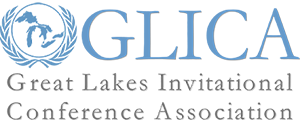United Nations Environment Programme
Renewable Energy
Democratic Republic of the Congo
Sara Plante
Forest Hills Eastern High School
In the Democratic Republic of the Congo (DRC), access to electricity is critically low despite the immense potential of both non-renewable and renewable energy sources. Research done by export.gov, a program to aid US companies’ evaluations of potential international partners, reported only nine percent of the Congolese have electricity; thirty-one percent of urban areas and a scarce one percent of rural areas. Currently, ninety-six percent of domestic power is hydroelectric and produced by two dams, Inga I and Inga II. These dams are near the mouth of the Congo River. They reach only fifty percent of their power potential because of unsubstantial maintenance and neglect. As part of the same plan, designed under the former dictator of the Congo, the Inga-Kolwezi line supplies the copper mines and bypasses the communities underneath. The Congo’s non-renewable energy resources include oil, natural gas, and uranium. Renewable energy sources include hydroelectric, biomass, solar, wind, and geothermal power.
In 2014, the DRC granted permission to producers independent from the DRC’s government to develop new energy plans that utilize both non-renewable and renewable energy sources. Most funding for new energy resources comes from mining facilities that heavily rely on electricity. Universities and other academic institutions have established centers for the research of renewable resources specifically. The Government of the DRC partnered with Power Africa, a program led by the United States Agency for International Development, to enact two new government agencies: the Authority for Electricity Regulation (ARE) and the National Agency for Rural Energy Service (ANSER). They consolidate and focus the efforts of everyone to provide energy for both public and private consumption. ARE and ANSER will also be used to attract capital to invest in developing the power sector. Also, this partnership aims to support new mini-grids and solar home systems.
The DRC urges the United Nations to assist in plans to increase access to electricity. The goal, stated by the Embassy of the DRC, is to increase the nine percent accessibility rate to thirty-two percent by 2030. The DRC would also support plans to spread electricity generated by the Inga dams to the following countries: Gabon, Cameroon, Nigeria, Mali, Angola, Namibia, Botswana, South Africa, Chad, Libya, Sudan, Egypt, Malawi, Zambia, Zimbabwe, and Lesotho. To advance the power generated from the Congo River, channeled by Inga I and Inga II, the DRC would like to spend funding requested from NGOs on the restoration of turbines in the existing dams. Furthermore, the DRC envisions a partnership with the GDRC to construct Inga III which is planned to produce an estimated 4,400 megawatts. This dam is a step towards “Grand Inga”, an eight dam plan with the potential to generate roughly 40,000 megawatts. This establishment has the prospective ability to meet most of Africa’s energy needs.
- Sara Plante


